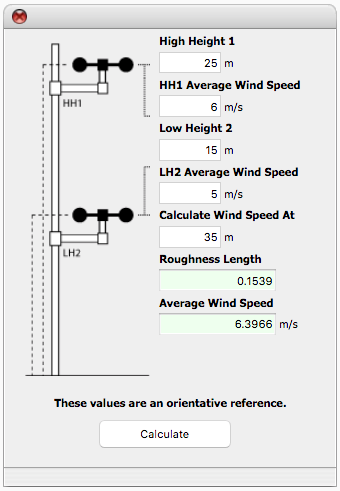When to Measure Wind at Two Heights
Due to their complexity, wind patterns are impossible to describe with a single concept or numerical value. It is common knowledge that wind speed varies from site to site, and also that it changes over time for a given location. However, there is another variation that is much less evident: wind conditions also change with altitude. For instance, a measurement taken 20 metres above ground level will yield a different result than one taken 50 meters over the same spot. This wind variation with altitude is called windshear.
Unless the wind is being blocked by a tall obstacle, its speed increases with altitude. Wind patterns are unique for each site, but they are determined by common physical principles.
- At ground level, the wind slows down due to friction with objects and terrain features. These obstacles have an effect for several dozen meters above ground level, since the wind is made of molecules that slow each other down.
- Wind can flow freely at altitudes where ground-level obstacles and terrain features no longer have an effect. If obstacles are tall, such as the skyscrapers in cities, their effect disappears at a higher altitude.
- Between these extremes, wind speed increases gradually the higher you go.
- Note that the wind is not only influenced by obstacles and terrain features at the site where it is being measured. Large-scale wind patterns are influenced by geographical features.
Weather scientists have studied windshear in depth, developing many mathematical models to describe it. Windshear is normally combined with turbulence, which can be described as a random three-dimensional movement of the wind. Turbulence is caused when the wind interacts with natural or man-made obstacles.
Importance of Measuring Windshear
There are many applications where wind speed may be required for a range of values as opposed to a single altitude value. The following are some common examples:
How to Determine Wind Speed for Multiple Height Values
In theory, you could account for windshear by measuring the wind at multiple heights. However, this approach has practical limitations:
- To measure the wind at multiple height values, you need more anemometers. This makes the monitoring system much more expensive.
- A taller tower is also required. This increases cost due to the extra material, and the tower must be sturdier to account for the stronger wind at higher altitude.
When wind speed is measured, it is important to specify the height at which the anemometer is installed. When no height value is provided, it is normally assumed that the measurement was taken at 10 metres.

You may recall from high school mathematics that you can calculate the slope of a linear graph using two points along the line. A similar principle applies for windshear, but just keep in mind that the math is much more complex!
- If you have two wind speed values for a given location at different altitudes, you can estimate speed for other height values, applying the mathematical models developed by weather scientists.
- The calculation procedure can be automated by a weather monitoring system, assuming it comes with advanced data processing functions.
Although this approach does not provide the same accuracy as measuring wind speed and direction at the required height, the confidence is over 95% if the method is used correctly. Experience is also very important: you will want to work with a provider that has an established track record in weather monitoring.
How Windshear Changes With Location
Windshear does not behave the same for all locations. In general, wind speed increases faster in proportion to altitude when there are less obstacles and uneven terrain around.
- Windshear is minimal out it the sea, far from the coast, since there are no obstacles above sea level disrupting the wind.
- A city with skyscrapers would be the opposite scenario - the disruption of natural wind patterns can extend several hundred metres above ground level.
- A field with trees and small hills would be an intermediate case. Windshear is less pronounced than in cities, but still significant compared with that of marine locations.
Ground-level obstacles are described based on a metric called the roughness length, which is a broad approximation of the height at which average wind speed becomes zero. This value ranges from less than one millimeter in the open sea, to several meters in urban locations.
Marine wind turbines are such a promising concept because the impact of terrain is eliminated almost completely: with no obstacles around, favorable wind speeds can be found at lower altitudes. This enables the use of shorter and less expensive towers.
Skriv en kommentar
Kommentarer vil blive godkendt før visning.






